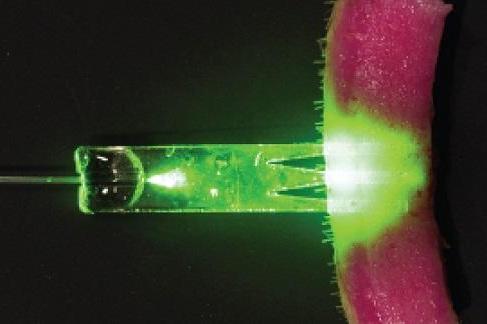
EDINBURGH, Scotland, Jan. 29 (UPI) — Light has healing properties, and a new fiber-optics technology developed by scientists at the University of St. Andrews promises to deliver those properties to damaged tissue.
The technology is called photochemical tissue bonding. Until now, it’s been used only to treat superficial wounds. Researchers have developed a technique that allows the light to penetrate deeper into human tissue.
Scientists developed biodegradable optical fibers capable of carrying light beneath the surface of a wound, delivering the light’s healing powers to a local point internally.
Fiber-optic strands for catheters are normally made of glass or plastic. Removing them from a healed wound can cause damage to the new tissue. Because the newly developed fibers can be naturally absorbed into tissue, the risks of removal are eliminated.
Researchers, who detailed their new invention in the journal Nature Communications, believe their findings could have useful application beyond boosting tissue regeneration.
The fiber-optic technology could improve a light-based cancer treatment technique known as photodynamic therapy. It could also be used in medical imaging.
“A variety of optical techniques, such as photochemical tissue bonding and photodynamic therapy, require efficient delivery of light deep into tissues, but the current limited penetration of light in tissue constitutes a serious constraint in clinical use,” lead researcher Malte Gather said in a news release.
“Having biocompatible and bioabsorbable optical components may transform photomedicine from a discipline where light is predominantly applied externally, to a new paradigm based on tissue-integrated and precisely controlled delivery and collection of light.”





